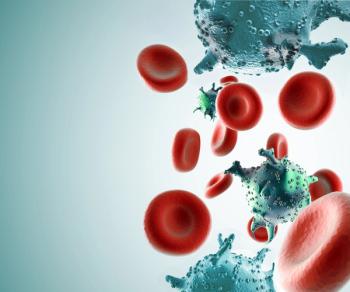
Oncology NEWS International
- Oncology NEWS International Vol 10 No 10
- Volume 10
- Issue 10
Tobacco Money Pot: Half Full or Half Empty?
WASHINGTON-More than beauty lies in the eye of the beholder. For example, the National Conference of State Legislatures (NCSL) and the Campaign for Tobacco Free Kids offered quite different interpretations of a report released by NCSL at its annual meeting.
WASHINGTONMore than beauty lies in the eye of the beholder. For example, the National Conference of State Legislatures (NCSL) and the Campaign for Tobacco Free Kids offered quite different interpretations of a report released by NCSL at its annual meeting.
The report examined the allocation by the states of monies received from the tobacco industry as the result of successful lawsuits or the settlement agreement that ended the lawsuits of 46 states and the District of Columbia. During fiscal years 2000 to 2002, the report said, 49 states allocated $21.283 billion.
Noting that nearly 46% of the money received in the last several years has gone to various forms of health care, the NCSL chose to emphasize that the largest single beneficiary of the tobacco settlement funds has been health care. More than $1 billion was spent on tobacco cessation and prevention between 1999 and 2001.
"Under the agreement, states have been given a great deal of flexibility in how they use their revenue," said Lee Dixon, director, NCSL Health Policy Tracking Service. "Right now, it is clear that states are committed to improving the quality and access of the health care programs that they offer."
However, the Campaign for Tobacco Free Kids focused on the fact that only 5% of the total funds received have been allocated to tobacco programs. "The large majority of states are breaking their promise to use proceeds to fund effective tobacco prevention programs," said Campaign president Matthew L. Myers.
Forty of the 49 states have funded tobacco prevention efforts and health services from the industry payments; 20 have allocated tobacco monies for endowments and budget reserves. Six states have used part of the money to institute programs to aid tobacco farmers and the communities that depend on tobacco growing for their economic strength.
Articles in this issue
about 24 years ago
High-Dose IL-2 Is Standard in Advanced Renal Cell Cancerabout 24 years ago
RIT Safe, Effective in Elderly and Poor-Prognosis Patientsabout 24 years ago
FDA Approves Xeloda/Taxotere Combination for Advanced Breast Cancerabout 24 years ago
ODAC Recommends Approval of Radiolabeled Zevalinabout 24 years ago
Proteomics Moves From the Laboratory to Clinical Researchabout 24 years ago
Radiotherapy Not Needed in Older Lumpectomy Patients With Early Cancerabout 24 years ago
Raltitrexed + Oxaliplatin for Advanced Colorectal Cancerabout 24 years ago
Mental Fatigue Worries Chemotherapy Patientsabout 24 years ago
Patients Urged to Work With Professionals Against Fatigueabout 24 years ago
NCI Director Resigns to Head New Scientific InstituteNewsletter
Stay up to date on recent advances in the multidisciplinary approach to cancer.

















































































